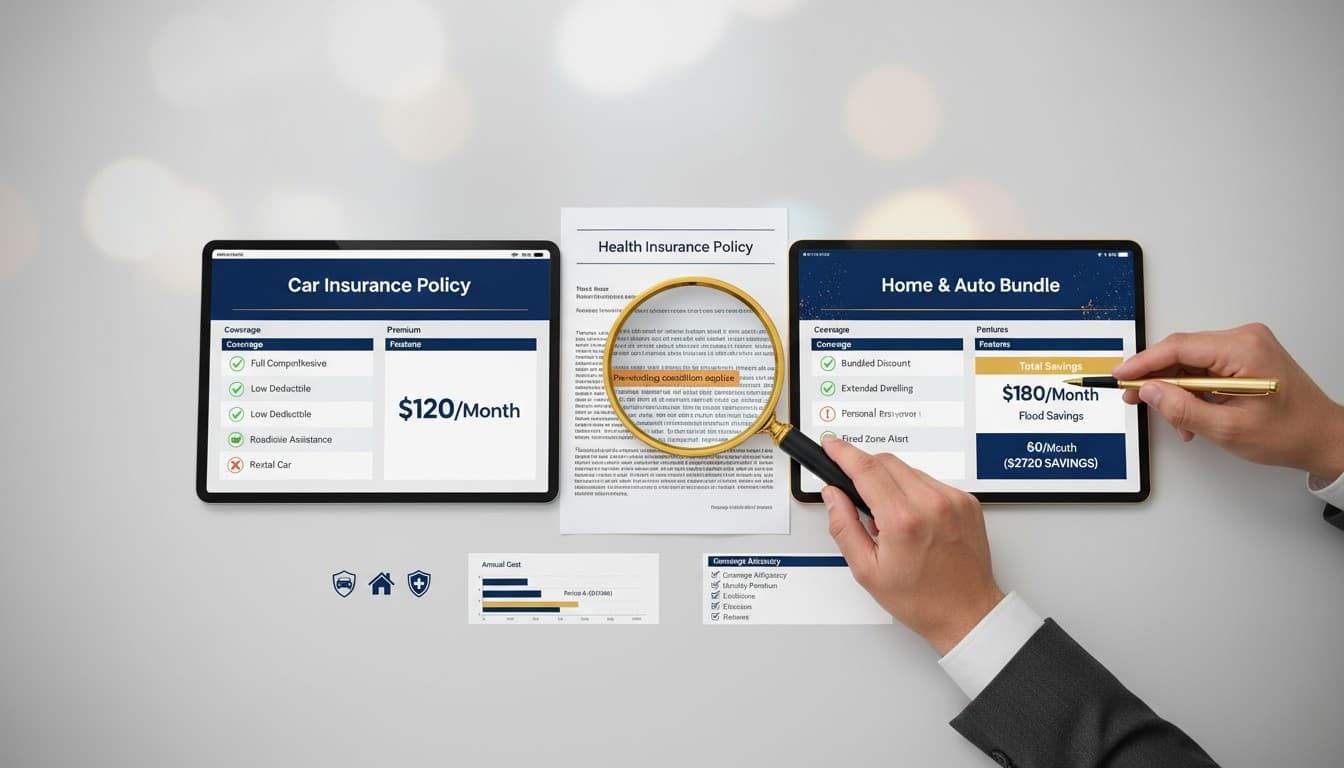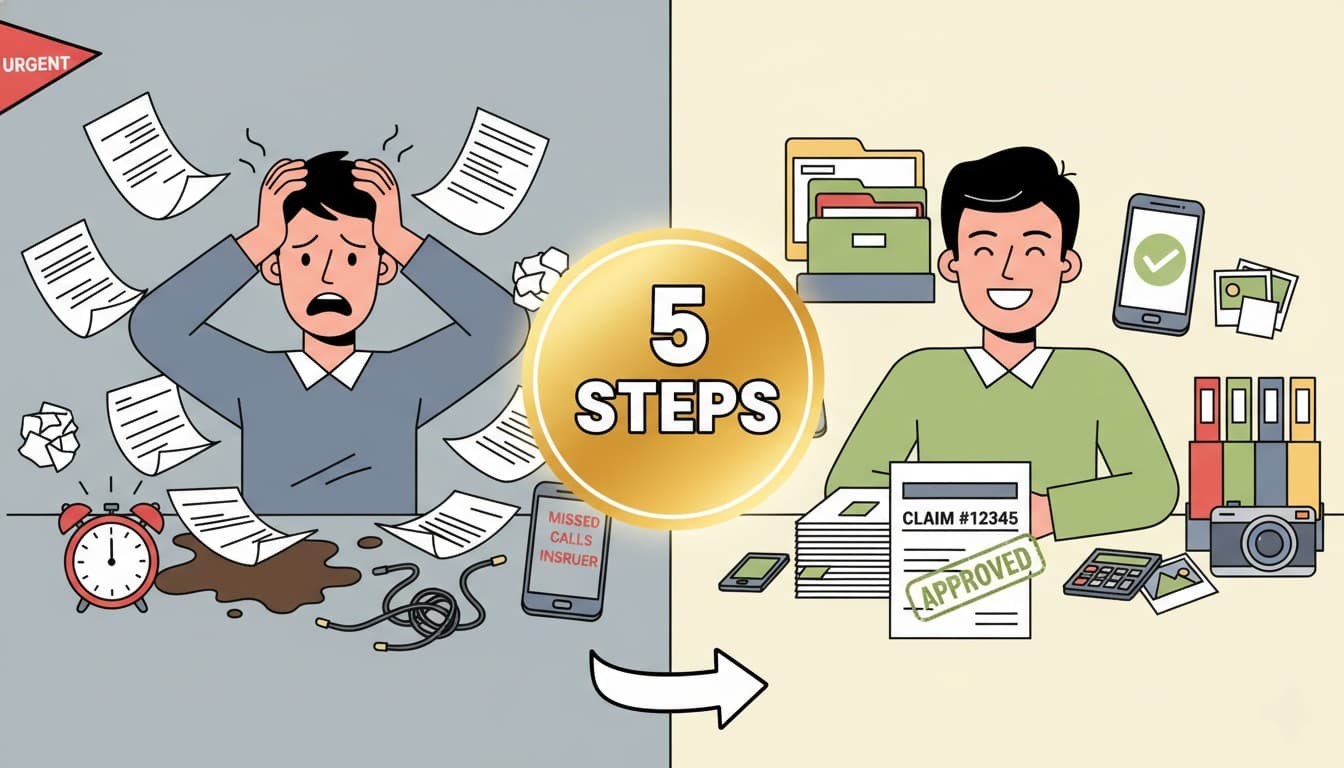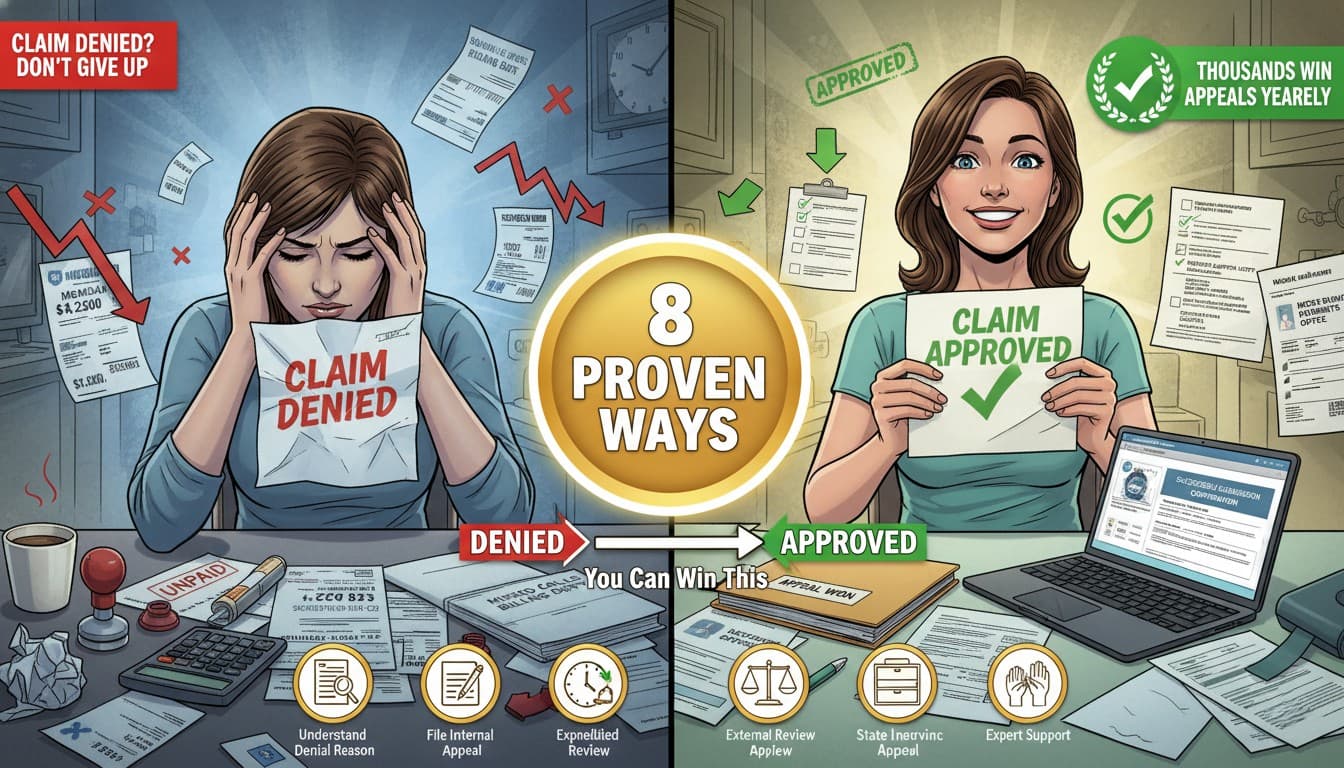Let me tell you something that happened to my colleague Sarah last year. She spent weeks shopping for car insurance, found a policy that was $40 cheaper per month, and immediately switched. She felt like a genius - until she got rear-ended six months later and discovered her new "bargain" policy didn't cover rental cars. She spent $800 out of pocket while her car sat in the shop for three weeks.
That's the problem with insurance shopping. Every company claims they're the best. The prices are all over the map. And most of us make decisions based on whatever number looks smallest, not what actually protects us when things go wrong.
I've seen this pattern dozens of times, and I'm going to walk you through a better approach. These six steps will help you compare policies the right way - so you get real protection, not just a cheap premium that falls apart when you need it.
Step 1: Compare Apples to Apples (Not Apples to Oranges)
Here's where most people mess up right from the start. They see two car insurance quotes - one for $85 per month and another for $120 - and immediately go with the cheaper option without checking what's actually included.
My neighbor Marcus was comparing home insurance policies last spring. Policy A was $95 monthly and covered fire, theft, and water damage. Policy B was $78 monthly but only covered fire and theft - water damage required an additional rider. He almost went with Policy B until I pointed out he lived in an area with frequent basement flooding. That "savings" would have cost him thousands after the first heavy rain.
Before you even look at prices, write down exactly what coverage you need. For car insurance, that might include liability, collision, comprehensive, uninsured motorist, and rental reimbursement. For health insurance, check whether prescriptions, mental health services, and preventive care are included.
Then make sure every policy you're comparing includes those same elements. If one policy is missing something important, either add it in or remove that quote from consideration.
Quick action: Create a simple spreadsheet with coverage types listed down the left side. Put each insurance company across the top. Check off what's included. This takes 10 minutes and saves you from costly surprises later.
Step 2: The Premium Is Just the Beginning (Look at Total Cost)
I learned this lesson the hard way with my first health insurance policy. I was 24, invincible (or so I thought), and chose the cheapest plan available - $45 per month with a $5,000 deductible.
Then I tore my ACL playing basketball. The surgery and physical therapy cost $12,000. Insurance didn't pay a cent until I hit that $5,000 deductible. I was making monthly payments on that medical bill for two years. That "cheap" premium ended up being the most expensive insurance decision I ever made.
The monthly premium is just your entry ticket. The real cost shows up in deductibles, co-pays, co-insurance, and out-of-pocket maximums.
Let me break down a real comparison I helped my sister with last month between two health plans:
Plan A: $180 monthly, $1,000 deductible, $6,000 out-of-pocket max, 20% co-insurance Plan B: $220 monthly, $500 deductible, $3,000 out-of-pocket max, 10% co-insurance
Plan A looked cheaper - $480 less per year in premiums. But with one moderate medical event costing $8,000, here's the reality:
Plan A total: $2,160 (premiums) + $1,000 (deductible) + $1,400 (20% coinsurance) = $4,560 Plan B total: $2,640 (premiums) + $500 (deductible) + $750 (10% coinsurance) = $3,890
Plan B, the "more expensive" option, actually saved her $670 that year.
Key question: Can you comfortably pay the deductible tomorrow if something happens? If not, a higher premium with a lower deductible might be smarter.
Step 3: The Fine Print Is Where the Truth Lives
Nobody likes reading insurance policy documents. They're boring, filled with legal language, and designed to make your eyes glaze over. But that's exactly where insurance companies hide the stuff they don't want you to notice.
My friend Jake bought travel insurance for a three-week trip to Southeast Asia - $85 for comprehensive coverage. Two days before his flight, he tested positive for COVID and had to cancel everything. He filed a claim for his $3,200 in non-refundable expenses. The insurance company denied it. Why? Buried on page 7 was this line: "Pandemic-related cancellations excluded from coverage." Cost him three grand.
Here's what you absolutely must review:
Exclusions - What's specifically NOT covered. Common ones include pre-existing conditions, natural disasters, war or terrorism, intentional damage, and activities like skydiving.
Waiting periods - How long before coverage kicks in. Dental insurance often makes you wait 6-12 months before covering major procedures.
Coverage limits - The maximum the insurer will pay. You might have $500,000 in home coverage, but jewelry might be limited to $2,000.
Claim filing requirements - How quickly must you report an incident? What documentation do they require? Missing a 48-hour reporting window could cost you your entire claim.
My approach: I call the insurance company and ask them to explain the three most common reasons they deny claims for that specific policy type. Their answer tells you exactly what to watch out for.
Real talk: If you don't understand something in the policy, don't sign it. Ask questions until it makes sense, or move on to a company that can explain their coverage in plain English.
Step 4: A Great Policy from a Terrible Company Is Still Terrible
You can have the perfect policy on paper - comprehensive coverage, reasonable deductible, great price. But if the insurance company takes six months to process your claim or fights you on every detail, that perfect policy is worthless.
Two neighbors on my street both had home damage from the same storm last year. Both had similar policies and similar damage (around $15,000 in roof and water damage).
Neighbor 1: Filed claim Monday, adjuster visited Wednesday, approval Friday, check arrived the following Tuesday. Repairs started 10 days after the storm.
Neighbor 2: Filed claim Monday, waited two weeks for adjuster, then the adjuster disputed estimates, required three rounds of documentation, and finally paid out 11 weeks later. She had a tarp on her roof for nearly three months.
Same storm. Similar damage. Completely different experiences. The difference? Company reputation.
How to research insurers properly:
Check the claim settlement ratio - what percentage of claims they actually pay. Anything below 90% is a red flag. You want companies consistently above 95%.
Read recent customer reviews (last 6-12 months) on Better Business Bureau, Trustpilot, or Google Reviews. Don't just look at star ratings - read detailed reviews, especially negative ones. If you see patterns like "they denied my claim for no reason" appearing repeatedly, that's your warning.
Look up their financial strength rating from agencies like AM Best or Standard & Poor's. You want an A- or better. Lower ratings mean they might not have money to pay claims during major disasters.
Important note: Don't automatically go with the biggest name. Regional companies sometimes provide phenomenal service that runs circles around national brands.
One more thing: Call their customer service before you buy. Ask a few basic questions. The way they treat you as a potential customer is usually how they'll treat you as a policyholder.
Step 5: Those "Small Extras" Can Save You Big Money
I used to ignore the bonus features section of insurance policies. Roadside assistance? Free health checkups? Seemed like marketing fluff.
Then I used them. Last winter, my car battery died in a grocery store parking lot at 9 PM. Temperature was 15 degrees. My auto insurance included free roadside assistance - something I'd never looked at. One phone call, 25 minutes later, a tow truck showed up and jumped my battery. No charge. I looked up what that service would have cost: $125 for an after-hours callout.
Here are bonus features that actually matter:
For Auto Insurance: Roadside assistance (worth $100-200 yearly), rental car reimbursement ($30-50 per day after accidents), glass repair with no deductible (windshield replacement costs $200-400), accident forgiveness (prevents rate spikes).
For Health Insurance: Free annual health screenings (worth $300-500 yearly), telemedicine access ($0 virtual visits instead of $150 urgent care), gym membership discounts ($20-40 monthly savings), prescription mail-order service (10-20% cheaper).
For Home Insurance: Water damage monitoring (prevents $10,000+ in damage), identity theft protection (restoration services worth $100+ monthly), temporary housing coverage (pays for hotels if home becomes unlivable).
My parents' homeowners insurance included a free annual HVAC inspection. The technician caught a carbon monoxide leak that could have killed them. That "small extra" potentially saved their lives.
Strategy: List these bonus features from each policy. Estimate how many times per year you might use each one. Multiply by typical cost. You'll quickly see which extras have real value for your situation.
My car insurance costs $23 more monthly than the cheapest quote I found. But it includes roadside assistance ($120 annual value), rental coverage ($150+ if needed), and accident forgiveness (potentially $400+ in rate increase prevention). That's $270-670 in value for $276 in additional premium. Worth it.
Step 6: Ask Questions Until Everything Makes Sense
If you're confused about something, it's not because you're dumb. Insurance companies often make things intentionally complicated.
I was helping my cousin compare life insurance policies last month. The agent kept using terms like "cash value accumulation" and "conversion options." My cousin was nodding along, clearly lost. I stopped the call and said, "Can you explain that like we're twelve?" The agent actually did, and we discovered features my cousin didn't need. We removed them and saved $35 per month.
Questions you should always ask:
- "What are the three most common reasons claims get denied for this policy type?"
- "If I cancel in six months, what happens? Do I get any refund?"
- "How do I file a claim? What's the typical timeline?"
- "Can my rates go up at renewal? Under what circumstances?"
- "Are there situations where my coverage would be reduced or cancelled?"
- "What documentation do I need to keep to make claims easier?"
- "Is there a grace period if I miss a payment?"
- "Can I adjust my coverage later without buying a new policy?"
Trick I use: I take notes during conversations and email them back to the agent with "Just confirming what we discussed..." This creates a written record and forces them to correct anything I misunderstood.
Red flag: If an agent rushes you, dodges questions, or makes you feel stupid for asking, walk away. A good insurance professional wants you to understand what you're buying.
I once asked an agent, "What would you tell your mother to focus on when comparing these policies?" Best question I ever asked. His answer cut through all the sales speak and gave me real insight.
The Right Policy Isn't Always the Cheapest One
The cheapest policy is rarely the best choice, and the most expensive one often isn't worth the premium. The right policy depends on your risk tolerance, financial cushion, actual needs, and the company's reputation for being there when you need them.
Sarah, my colleague who got burned by cheap car insurance? She's now with a policy that costs $28 more per month. But it includes rental coverage, better collision terms, and comes from a company with a 98% claim settlement ratio. When she had a minor accident last month, everything was handled in five days with zero stress.
That's what good insurance feels like - not the cheapest price tag, but actual peace of mind.
Take your time with these six steps. Review the details. Ask uncomfortable questions. Do the math on total costs, not just premiums. Research the company behind the policy. The hour you spend comparing properly could save you thousands of dollars and massive headaches when you actually need protection.
Want to know if you're paying fair market rates? Try our free Smart Insurance Calculator - it shows you estimated costs and compares them to average market prices, helping you make informed decisions. No signup required.











